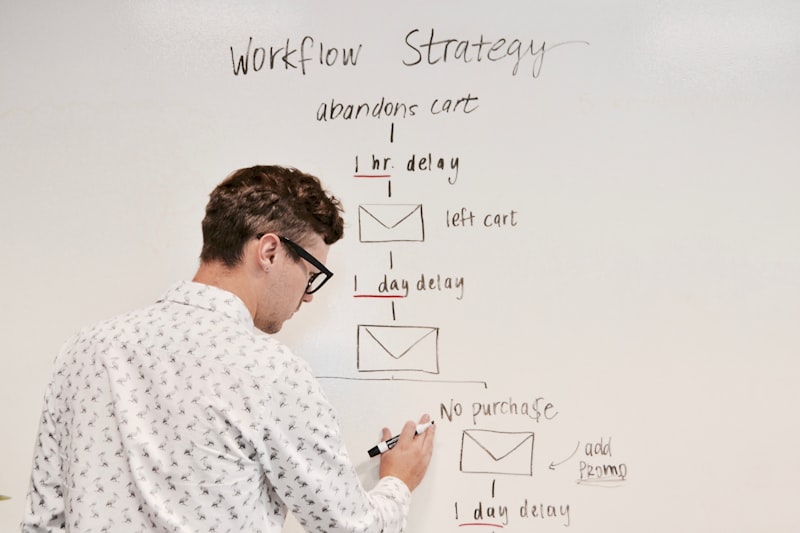"Email marketing is to the travel industry what search is to retail.”
- Litmus
Email marketing remains one of the most effective digital marketing channels for the travel and tourism industry. With high open and click-through rates compared to other sectors, email presents a significant opportunity to engage customers during the travel research and trip planning process.
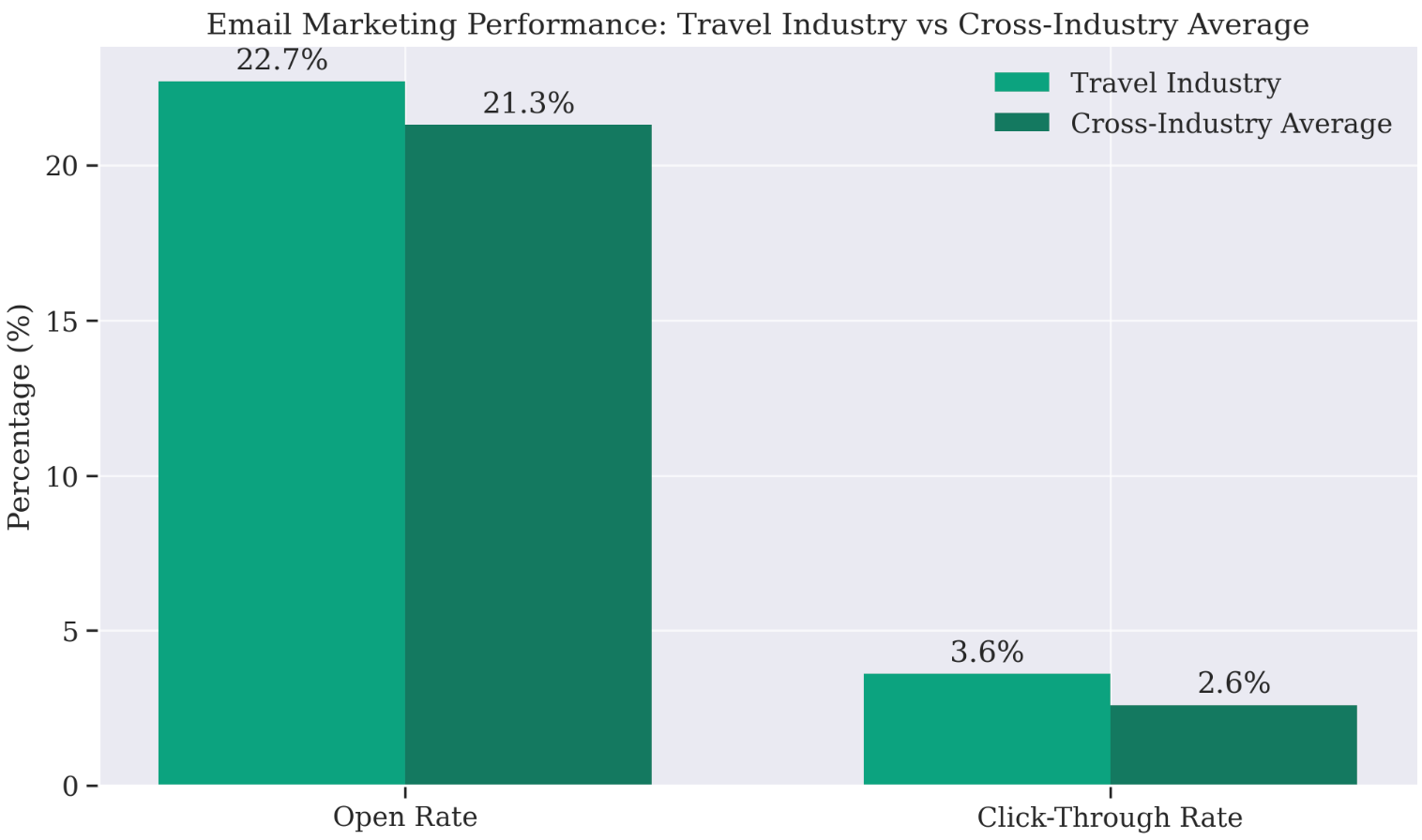
Travel marketers leverage email to inspire wanderlust with dreamy visual storytelling, deliver personalized offers and promotions, provide pre- and post-trip customer service, and ultimately drive conversions.
According to Litmus’ 2022 benchmark data, the travel industry boasts:
- An average email open rate of 22.7%, well above the cross-industry open rate of 21.3%
- A click-through rate of 3.6%, surpassing the all-industry CTR of 2.6%
With such strong email engagement, the returns on investment are compelling as well. For every $1 spent on email marketing, travel marketers see on average $51 in return.
Clearly, email marketing works for travel brands. This guide will explore some of the key strategies and best practices for deploying effective email campaigns.
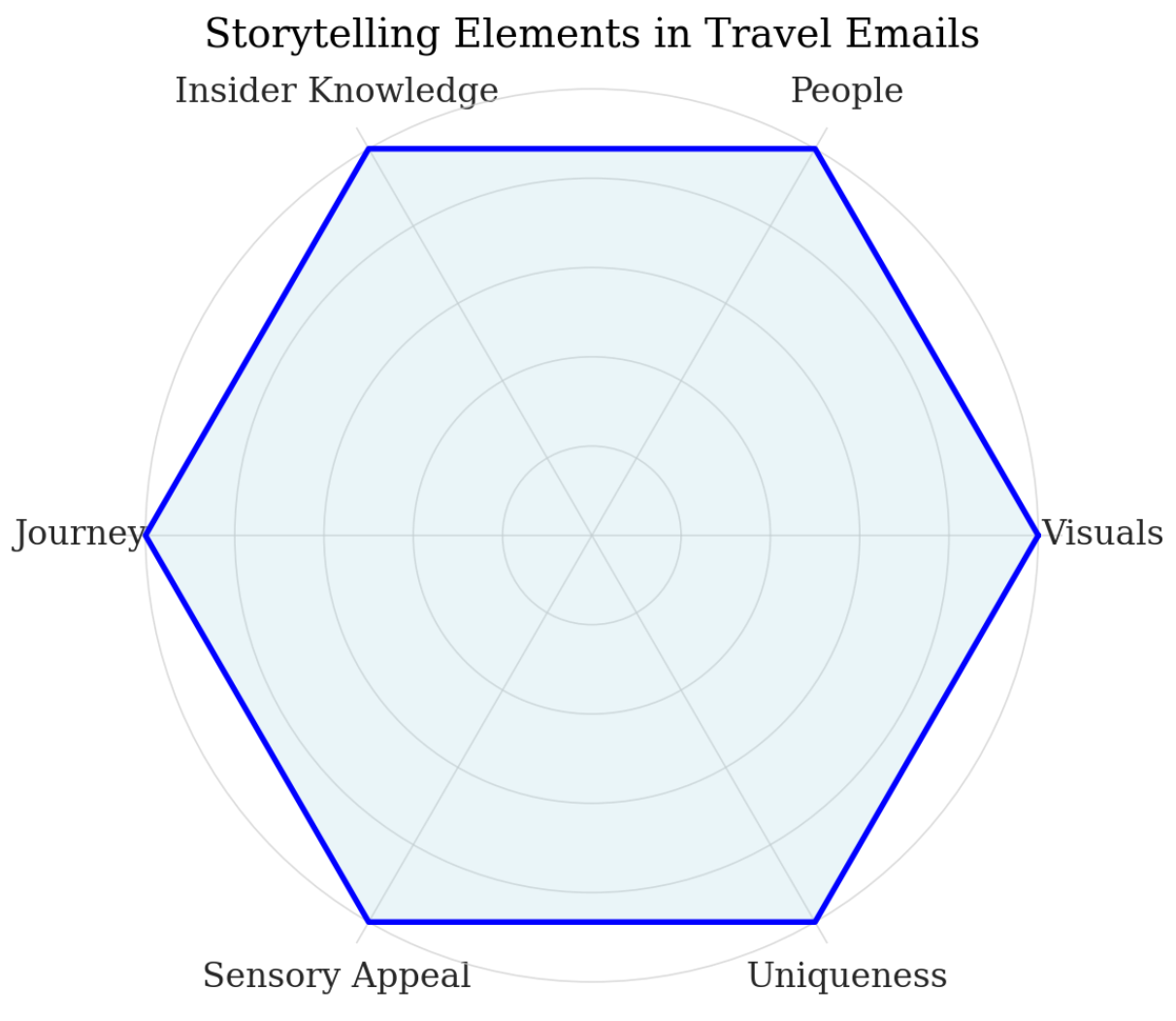
Storytelling in Travel Emails: Capturing the Wanderlust
Emails that tap into the wanderlust of travel enthusiasts and weave compelling narratives perform remarkably well for travel brands. Stories capture attention and spark emotion, which prompt audience actions like clicks, shares, and purchases.
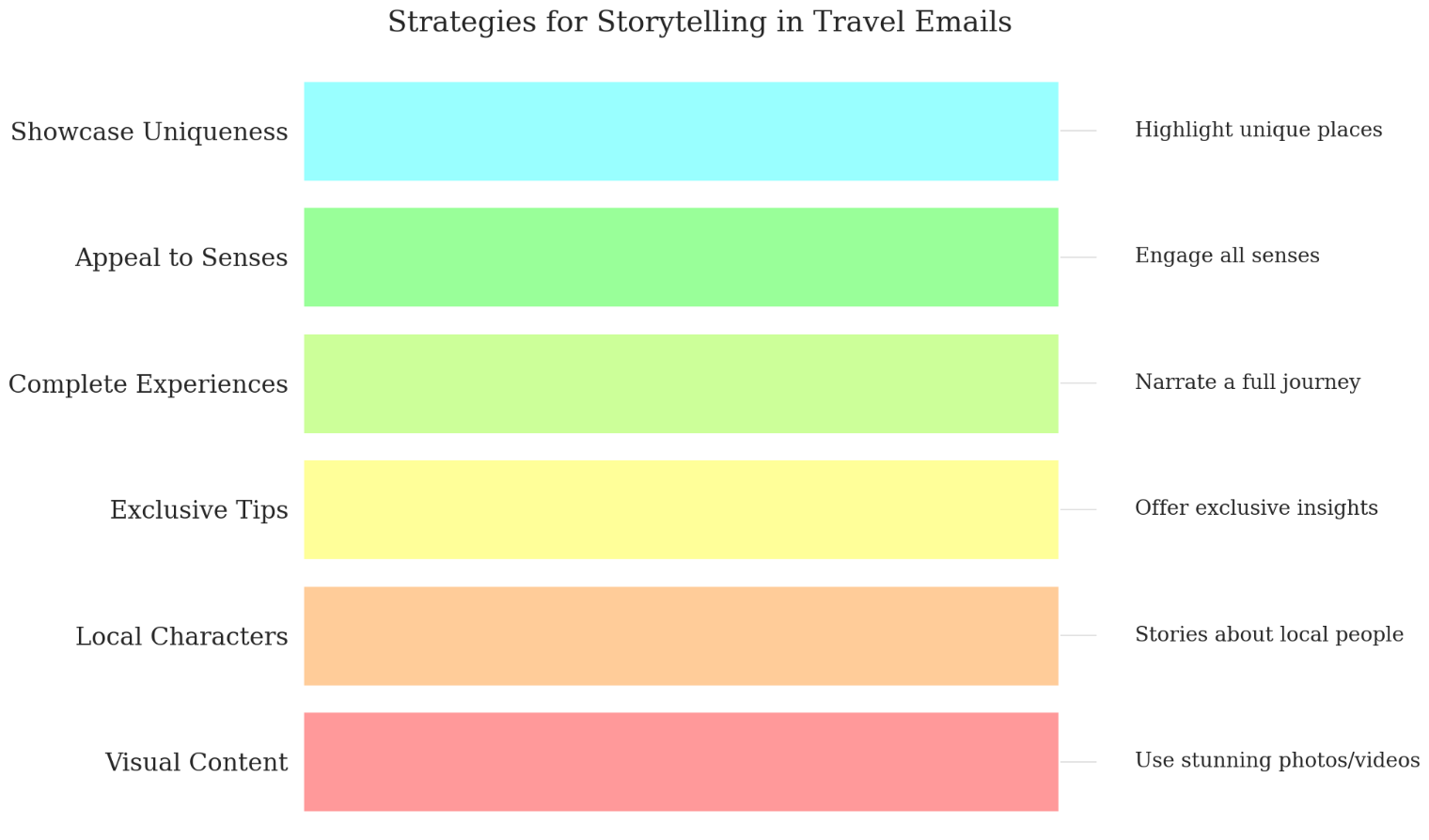
Crafting Compelling Narratives
Some tips for telling great stories through travel emails:
- Be visual: Use stunning photography and video to quickly immerse subscribers in another world
- Highlight people: Share stories about local characters, artisans, and domain experts
- Convey insider knowledge: Offer exclusive tips and insights to make readers feel like VIPs
- Share the journey: Tell the story of a complete travel experience from planning to return
- Appeal to the senses: Help readers imagine sights, sounds, tastes, and feelings
- Emphasize uniqueness: Showcase hidden gems, rarer experiences, and exotic locales
Examples of Story-Driven Travel Emails
Some travel brands using storytelling effectively in their email campaigns include:
- Airbnb’s digital magazine and newsletter, Pineapple, features first-person travel stories paired with beautiful photographs
- Intrepid Travel’s emails highlight local guides sharing favorite hidden spots and authentic cultural experiences
- Tour operator G Adventures sends emails written from the perspective of the CEO’s own travel adventures
- The Peninsula Hotels send poetic emails describing senses like the sound of musicians in the lobby
The common thread is crafting sensory, emotional narratives that engage on a personal level and transport readers. This helps build relationships with travelers who want to be part of the story.
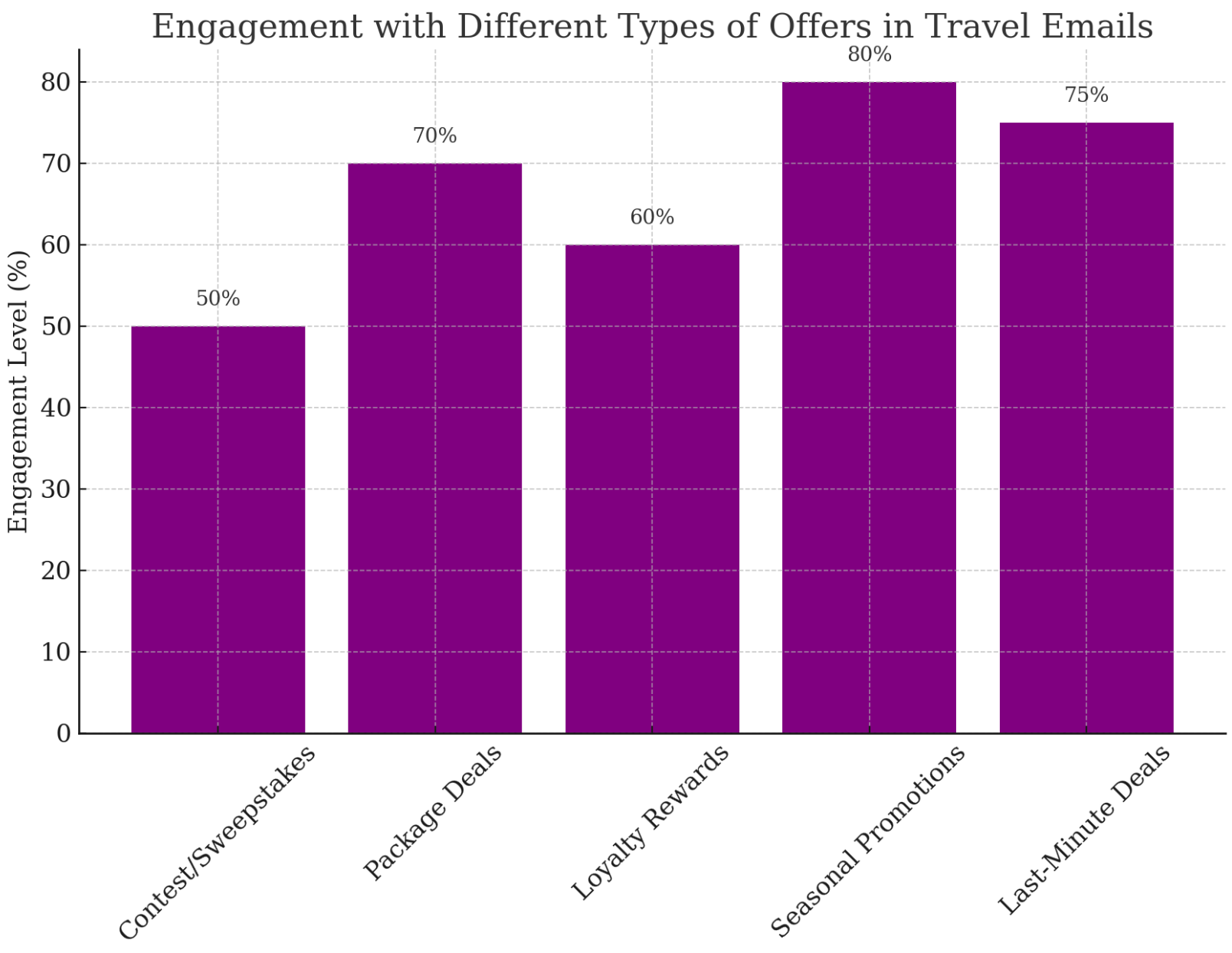
The Role of Offers and Discounts in Travel Email Campaigns
While storytelling builds desire, compelling offers incentivize action. Strategic use of discounts, deals, contests, and perks in email can help convince subscribers to take the leap and book travel.
Designing Irresistible Offers
Some tips for creating tempting travel offers for emails:
- Leverage timing: Offers tied to holidays, events, seasons, or last-minute deals add urgency
- Highlight exclusivity: Special rates, flash sales, member perks create FOMO
- Offer incentives: Bonuses like upgrades, amenities, or loyalty points entice clicks
- Keep it personal: Segment and customize offers based on traveler profiles
- Focus on value: Communicate the worth, not just the cost – “Get $600 of benefits for $95”
| Offer Type | Example |
|---|---|
| Contest/Sweepstakes | Enter to win a dream vacation to [location] |
| Package Deals | Get airfare, 7 nights at [hotel], and transfers for $X |
| Loyalty Rewards | 15% off your next stay for joining our rewards program |
| Seasonal Promotions | Save 25% on winter getaways in the mountains! |
| Last-Minute Deals | 72-hour flash sale: [location] for $X this weekend only! |
Balancing Value and Profitability
The right offer can generate a surge in conversions. But marketers must also consider lifetime value rather than quick discounts that undermine long-term profitability.
Strategies like limiting-time offers, high-value gift bonuses (spa credits, meal vouchers), and variable/dynamic pricing help balance value with revenue. The key is understanding audience behavior and carefully testing offer performance.
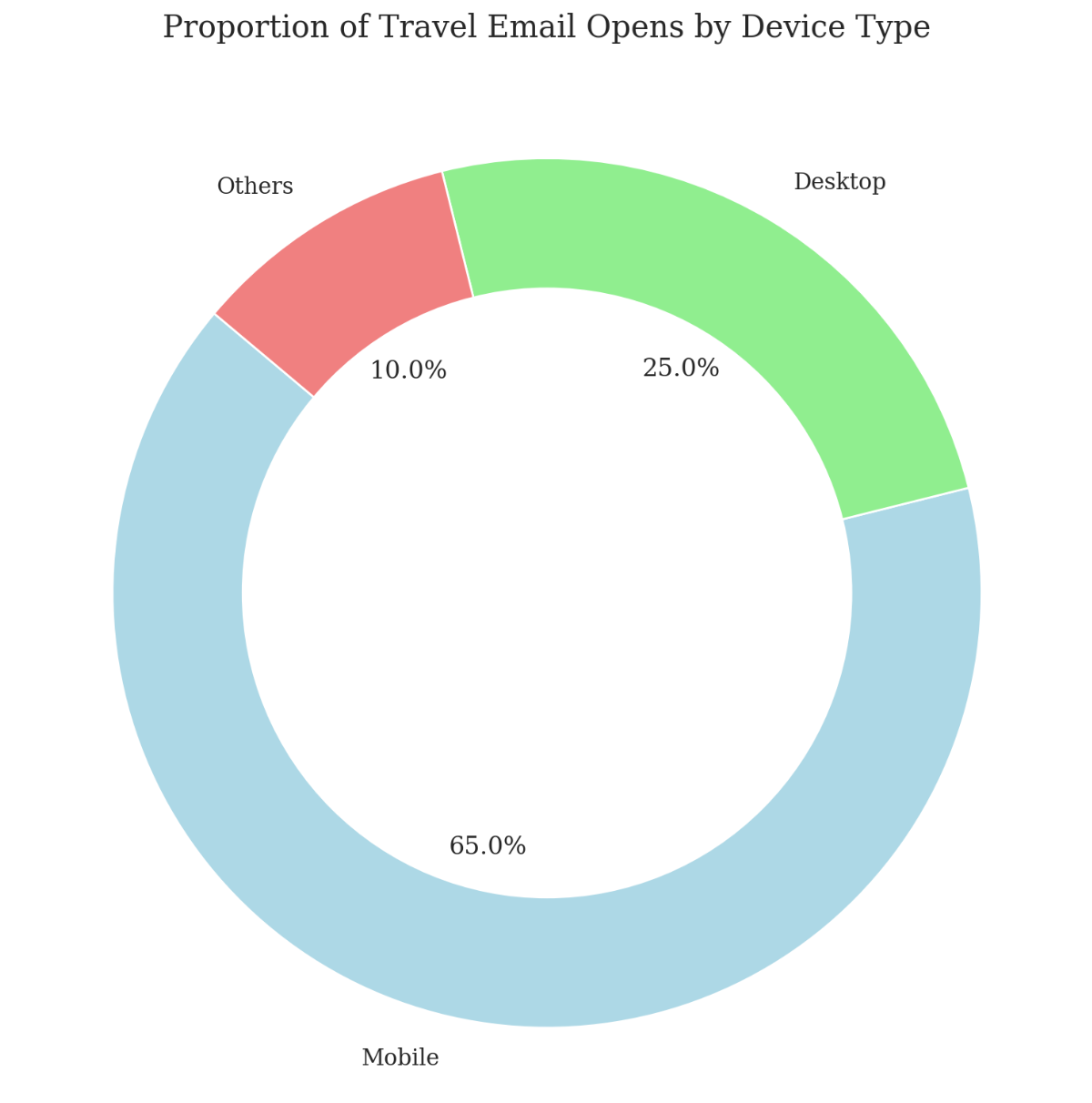
Best Practices for Mobile-Optimized Travel Emails
With emails increasingly opened on mobile, optimizing for smaller screens is a must. More than 65% of travel email opens occur on mobile, according to Litmus. Adaptive design and simplified content improve engagement.
Understanding Mobile User Behavior
Some mobile user behaviors to consider:
- Skimming: Mobile users are more likely to skim and scan for key info
- Focused: Shorter attention spans require concise, high-impact copy and visuals
- Impatient: Slow load times lead to abandoning emails on mobile
- Action-oriented: Clear calls-to-action are crucial to drive actions on small screens
Designing for Mobile: Layouts and Responsive Design
Best practices for mobile travel email design:
- Responsive templates: Use fluid column layouts that adapt to screen sizes
- Single-column: Stick to one column for narrow mobile widths
- Resize/crop images: No horizontal scrolling or shrunken images
- Buttons before body copy: Place CTA buttons above the fold
- Simplify navigation: Use minimal hierarchical menus for small screens
- Limit scrolling: Keep copy succinct and avoid excessive scrolling
- Enlarge touch targets: Increase tap target size for buttons/links
- Test across devices: Review on smartphones, tablets for consistency
Focusing on the mobile experience boosts open rates, click-through rates, and conversions for travel emails.
Integrating Social Proof in Travel Email Marketing
Peer validation and social proof strongly influence traveler purchasing decisions. Spotlighting positive reviews, feedback, and testimonials in emails builds credibility and trust.
Customer Testimonials and Reviews
Ways to highlight social proof in travel emails:
- Pull excerpts from customer reviews on major sites like TripAdvisor
- Quote testimonials from past travelers submitted on your website
- Link to review pages showcasing only 5-star ratings
- Include number of Facebook likes/Instagram followers to convey popularity
- Share press mentions and awards from reputable publications
Effective Use of Social Proof
Hotels integrate social proof widely in their email campaigns:
- Marriott includes gold TripAdvisor badge and “Travelers’ Choice” text with star ratings
- Hilton quotes customers praising hotel locations and service
- Virgin Hotels prominently displays its 4+ star TripAdvisor rating
Displaying validation from other customers builds trust and credibility that influences subscribers’ booking decisions.
Innovations and Future Directions in Travel Email Marketing
As traveler behaviors and preferences evolve, expect to see travel brands continue innovating their email marketing strategies.
Several emerging trends include:
- Hyper-personalization: Leveraging data and AI to deliver individually tailored emails
- Interactive content: Quizzes, calculators, and other interactive formats
- Conversational commerce: Shopping and booking through natural conversation
- Video: Richer video content and personalization
- Augmented reality: Immersive previews of travel experiences
With email remaining a highly effective channel for engaging travelers, brands will keep pushing the envelope. Capturing wanderlust through storytelling while incentivizing action via compelling offers and social proof will continue proving winning strategies.
Email marketing still presents tremendous untapped potential in the travel sector. As technology enables more creativity, personalization, and deeper customer connections, it will propel business success well into the future.
FAQ
What are some best practices for crafting compelling storytelling emails for travel brands?
Strong storytelling in travel emails creates an emotional experience that transports readers and compels them to take action. Some best practices include using vivid sensory details, conveying insider knowledge and expertise, highlighting unique experiences, sharing complete travel journeys, appealing to the senses, and focusing on emotional resonance over hard selling. Enhance stories with captivating visuals showing destinations and characters. Craft narratives from different perspectives like locals, past travelers, or from your brand's point of view directly. Build continuity across an email series or campaign. Personalize stories based on traveler profiles when possible. Test different storytelling approaches and continuously refine based on engagement data.
How can I optimize my travel emails for mobile without compromising design?
Keep these tips in mind when optimizing travel emails for mobile: Use responsive templates with fluid column layouts that adapt to different screen sizes. Stick to single-column layouts for narrow mobile widths. Resize or crop images to remove horizontal scrolling or shrunken pictures. Place CTA buttons above the fold so they are visible without scrolling on mobiles. Simplify navigation and limit long scrolling by keeping copy tight. Check emails on physical smartphones of different sizes to identify any design issues. Enlarge tap targets for buttons and links to make them easy to press on small screens. Avoid tiny text, cramped layouts, and other friction points. Finding the right balance between aesthetics and mobile functionality takes testing.
What types of promotional offers perform best in travel email campaigns?
The most effective travel email offers align with audiences’ interests while adding urgency and exclusivity. Limited-time seasonal deals around holidays or events work well. Flash sales and last-minute promotions add urgency. Exclusive rates, member perks and loyalty rewards build anticipation. Bundling flights, hotels, and amenities into package deals provides value. Sweepstakes and contests encourage engagement. No matter the offer, focus the messaging on its tangible worth and savings rather than just the price. Make sure emails are segmented so offers are relevant to subscribers’ profiles. Test a range of discount percentages, package components, and calls to action to determine what converts best.
How can I incorporate social proof into travel emails to increase trust?
Build credibility by highlighting peer experiences like online reviews, testimonials and ratings in your travel emails. Pull excerpts from major review sites like TripAdvisor and Google that reinforce your brand strengths. Publish percentages of 5 star reviews or display review scoring badges. Survey recent customers and feature their positive feedback. Showcase press mentions and awards from reputable publications. Quote influencers in your niche. Display social media follower counts to convey popularity. Use trust seals to highlight security and safety. Focus on elements that relate to factors important for travel decisions like location, amenities, and hospitality. Update social proof regularly to maintain relevance.
What metrics should travel marketers track to determine email campaign performance?
Key metrics to track for travel email campaigns include: open rate, click-through rate, bounce rate, unsubscribe rate, conversion rate, revenue per email, and return on investment. Compare against your own historical benchmarks as well as industry averages. Optimize campaigns to boost open and click-through rates. Lower bounce and unsubscribe rates indicate more engaged subscribers. Prioritize list quality over quantity. Monitor conversions on desired actions like bookings, sign-ups, downloads. With revenue tracking, calculate return on investment over time to demonstrate email’s impact. Technical factors like deliverability, rendering, and deliverability also affect performance. Continually test and refine based on data insights.
How can I create a personalized travel email experience?
Leverage data collection and segmentation to tailor emails. Build rich traveler profiles with info like destinations of interest, previous trips, activities, brand interactions, and demographic data. Use this to personalize subject lines, trip suggestions, special offers, on-site recommendations, and more. Automate emails based on actions like abandoned bookings. Integrate dynamic content to insert recipients’ names and other details. Show personalized images of destinations visited. Rely on AI and machine learning to determine optimal content. Combine mass personalization with tailored one-to-one messaging when possible. Always ensure relevant, valuable content meets expectations. Give subscribers content control via preferences. Balance personalization with privacy concerns. Testing is key to refining approaches.
What innovative email formats perform well for travel brands?
Beyond standard email content, creatively formatted emails can increase engagement. Some formats with potential include interactive quizzes about ideal destinations, scratch-off reveal emails with deals, packing list builders, AR-enhanced trip previews, visual preference polls for recommendations, virtual tour emails with clickable hotspots, interactive maps, and itinerary builders, 360-degree video emails, chat-based emails via conversational commerce, and more. Personalized video emails also perform well. The key is connecting innovative formats to specific campaign goals. Always ensure technical functionality and optimize for ease of use across devices. Continuously test new formats against existing ones to determine impact.
How can I improve email engagement rates among travel subscribers?
There are several ways to improve engagement: First, offer exclusive value through compelling content - stories, tips, perks, etc. Make subscribers feel rewarded as VIPs. Send consistent emails - don’t oversaturate or disappear for long periods. Ensure relevant segmentation so emails match interests. Refresh content frequently to maintain anticipation. Make engagement opportunities - polls, reviews, forwards to a friend - easy. Leverage holidays, events, and seasons to spike engagement. Send confirmation emails after purchases to continue relationships. Pay attention to open and click-through rates as feedback signals. Test days/times to identify when subscribers are most active. Target engaged segments with special offers and incentives. Measure against past performance and optimize accordingly.
What tools can help manage travel email campaigns?
Leading email service providers like Mailchimp, Constant Contact, or Campaign Monitor offer full-featured tools for travel email campaigns. Their templates, analytics, automation, and integration options streamline complex workflows. Marketing automation platforms like HubSpot and Marketo also incorporate robust email capabilities. CRM tools like Salesforce integrate email with travel customer data. Social media management platforms like Sprout Social and Hootsuite allow email/social integration. Many solutions offer mobile optimization, A/B testing, list management, and design collaboration features. Consider factors like budget, email volume, automation needs, and technical expertise when choosing. Most also provide analytics to help track performance. Prioritize platforms that grow with your changing needs.
What strategies can help avoid deliverability issues and spam filters?
Practicing good email deliverability hygiene ensures your travel emails reliably reach inboxes: Proactively confirm and validate email addresses. Continuously prune outdated, bounced addresses from lists. Avoid excessive emailing frequency. Follow anti-spam laws like CAN-SPAM Act compliance. Use permission-based opt-in lists only. Ensure easy unsubscribe options in every email. Monitor and maintain a healthy sender reputation. Check spam filter test tools to identify any red flags. Enable authentication like SPF, DKIM to ensure legitimate sending. Carefully select email content to avoid overly salesy language, clickbait subject lines, or spam triggers. Analyze your email domain's reputation history. Follow best practices for acquisitions and re-engagement. Apply email authentication technology like DMARC.



